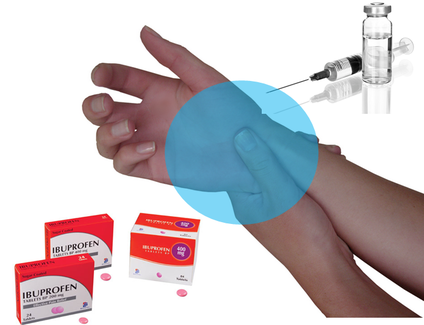 Golf and tendon injuries seem to go ‘hand in hand’ with golf. In fact, putting aside the lower back area, which is most commonly injured, the wrist, elbow and even shoulder area’s predominantly involve tendon pathologies. Traditionally we referred to these injuries at ‘tendinitis’; implying an inflammatory reaction in the tendon. Research lately has shown that there is in fact little or no inflammation generally in these injuries. Rather there are degenerative changes present to the collagenous tendon structure. Tendinitis has now therefore been renamed Tendinosis, to stop the association with inflammation. With this renaming, golfers must now change the way they look to manage these common injuries life golfers elbow, tennis elbow, flexor and extensor carpi ulnaris tendinosis (wrist).  Traditionally the golfer would maybe ice and take some painkillers. If this didn’t work they would move onto oral NSAIDS (nonsteroidal anti-inflammatory medications) like Ibuprofen (nurofen) or Diclofenec (voltaren) and keep playing. If over a short (or sometimes long……..) time this didn’t work, a visit to the Doctor may have resulted in a referral for a cortisone injection. Bearing in mind what we have talked about previously, that being the lack of actual inflammation in this injury, it is not surprising that recent research tends to show that this path has no long-term benefit to this type of injury. Cortisone, if repeatably used, has been shown to cause adverse effects to the tissue in the area. Pain relief is generally felt in the short term, however it is felt that this is due to it ‘blocking’ or ‘retarding’ other irritating substances that occur as part of the injury process, not actual accelerating the healing.  The approach that research does support strongly for tendinosis injuries, and that in my opinion is a necessity, is an eccentric strengthening program. An eccentric muscle action is where a muscle lengthens while contracting. A program designed with these exercise’s needs to be performed for 90+ days consistently. So you must be patient otherwise the proper repair will not occur. With a specific eccentric strengthening program being used to repair the damaged tendon the golfer must then make sure they identify the cause of this ‘over-use’ type injury. Technically your coach may identify swing factors that cause increased stress (or over-use) to the tendon. A full golf specific screening by your physiotherapist may also identify other impaired (weak, tight etc.) area’s that need to be addressed As with any injury you always need to seek appropriate advice and if in doubt discuss the most appropriate management option. Martin McInnes - GolfFit Physiotherapy
John Azon
8/8/2013 07:17:21 am
How get a password to "Elite Improvment ..." program= 8/8/2013 08:57:47 am
Hi John,
Koehler Bernd
9/8/2013 06:34:16 am
Comments are closed.
|
Archives
June 2019
|
Proudly Supported By
Copyright © 2011 - 2018 Pro Tour Golf College
Website Managed By Golf Performance Media
All Rights Reserved
Website Managed By Golf Performance Media
All Rights Reserved


 RSS Feed
RSS Feed



